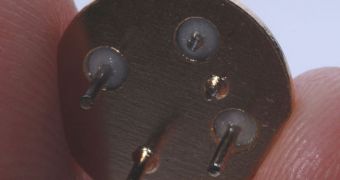Experts from the Israel Institute of Technology, in Haifa, have recently announced that they are working on a new electronic nose that will have the ability to detect early signs of lung cancer, before the disease advances far enough to show up on conventional viewing methods such as X-rays and MRI. Relying on the power of gold nanoparticles, the new biosensor will be advanced enough to isolate and identify all the compounds that are released from the lungs once cancer starts setting in.
This approach will hopefully provide oncologists with a new strategy in fighting the diseases. The earlier on it's identified, the higher the chances that aggressive treatments won't be needed. Healthcare experts could thus have more options at their disposal, outside chemotherapy, or the removal of large amounts of lung tissue. Technology Review reports that the new device has already proven itself to be more promising than any other similar instruments thus far constructed.
All of these instruments analyze biomarker chemicals known as volatile organic compounds (VOCs), which form inside the lungs, and which we breathe out regularly. The thing is that these elements are in such low concentrations, that they are extremely difficult to detect. Previous methods of detecting them relied on boosting their concentration before analysis, a process that was prone to a number of errors. The new device, constructed by a team of researchers led by expert Hossam Haick, will be able to detect the VOCs at their natural concentrations.
The biosensor will also be able to function without a hitch in the humid conditions that are characteristic of the human respiratory process. Details of the team's approach appear in the latest online issue of the respected scientific journal Nature Nanotechnology. “It was quite a lot of work to get them [the VOCs] to stick [to the gold nanoparticles]. We're the first to do so, as far as I know,” Haick adds. He has refused to give details on how this was achieved, however.
“Any advance in the area of developing sensors for breath research is exciting to me, and I think this is certainly an advance. This was a very well-done, very promising study. I don't know if it is accurate enough to use in clinical practice, yet it's very exciting to see another promising sensor system,” specialist Peter Mazzone, from the Cleveland Clinic, in Ohio, the US, says of the Israeli research on lung cancer.

 14 DAY TRIAL //
14 DAY TRIAL //